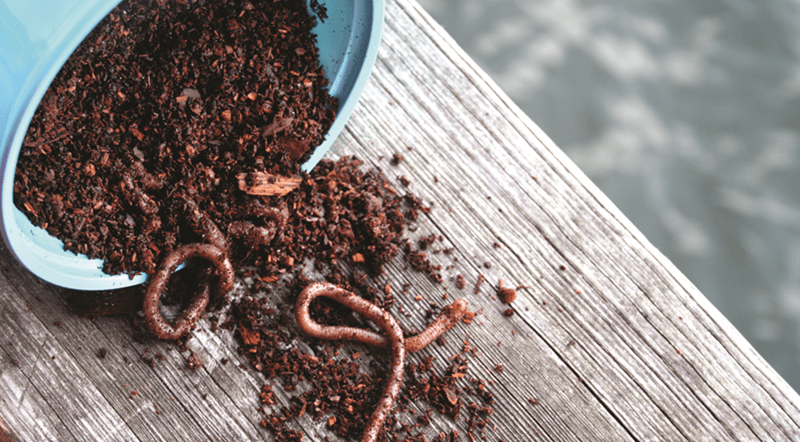
“ . . . And the worms crawl in, the worms crawl out
They crawl all over your dirty snout
Your chest caves in and your eyes pop out
Your brain turns to sauerkraut
They invite their friends, and their friends too
They all come down to chew on you . . .”
— old children’s song, The Hearse Song, of unknown origins (but most likely England).
Worms. Did you ever stop and think about what’s under your feet, under the grass, in the soil? Aside from tiny microorganisms breaking down organic material there are earthworms. If you haven’t spent much time mulling over worms, don’t worry, because others have. One of the most famous ponderers of worms was the famous English naturalist, geologist and biologist, Charles Darwin – who’s best known for his theory of evolution (referred to as “Darwinism”).
Yup, it’s true.
So the story goes, after his adventures aboard the vessel H.M.S. Beagle, in 1837 Darwin needed a little rest and relaxation. To do this he stayed with his uncle, Josiah Wedgwood in Shrewsbury, England. Good ol’ Uncle Josiah showed him a patch of land that had, years before, been covered with lime and other porous rocks, called cinders. Over time the lime and cinders disappeared, now a part of the soil. Uncle wondered aloud to his nephew something like this, “I wonder if earthworms caused the transformation?” From those convalescing days with his uncle, Darwin’s mind started turning. And, by the end of the year he published his first paper on worms forming “mould.”
That paper wasn’t all Darwin published on the subject. He was so interested by worms that he wrote his last scientific book titled, The Formation of Vegetable Mould through the Action of Worms, with Observations on their Habits, published nearly 50 years after his first paper, in 1881.
So, What About Worms And Soil?
Get this: In one acre of soil there can be up to one million worms! Further, these worms can produce up to 700 pounds of castings each day! According to an article by Jen Fong and Paula Hewitt, 2,000 red worms in a worm bin can produce seven pounds of castings in one month. (Castings are those things we all called worm poop when we were kids, those little mounds of “mud” left around worm holes – and what organic gardeners love to use around their flowers and veggies.)
Want to know more about worms? We did and here is what we found out from Fong and Hewitt’s article.
Worms do not have teeth. Their food is softened by moisture, microorganisms and their food is further broken down in the worm’s gizzard, which contains hard particles and muscles which grind ingested food.
Worms do not have eyes. They can sense light, especially at their front end.
Worms can live as long as four years. When worms die in the bin, their bodies decompose and are recycled by other worms, along with the food scraps.
Worm castings are toxic to live worms. Which only makes sense!
Worms are hermaphrodites. Each worm has both male and female organs. Worms mate by joining their clitella (the swollen area near the head of a mature worm) and exchanging sperm. Each worm then forms an egg capsule in its clitellum; after seven-10 days, this is shed into their castings. Egg capsules are lemon-shaped and about the size of a match head. After 14-21 days, baby worms hatch. One to five worms emerge from each egg. In 60-90 days, the young worms are mature and are ready to mate on their own.
Worms are good tillers. Not only do they help make soil, they mix layers of soil. Their tunnels also help aerate and water the soil, which helps feed plant roots.
Worms are not just all slimy all over. They have tiny feeler-like bristles, called setae, on their undersides. These bristles help worms move through the soil.
* * *
So, the next time you are wandering about bare foot in your backyard, or just laying down under your favorite tree, looking up through the branches to the sun-filled blue sky, take a minute to think about what’s under you. Right below you, at any one time thousands of those pink crawlers are hard at work making tunnels, making more dirt and (of course) making baby worms. Or, you may want to think of this, the last lines of Darwin’s book on worms, “When we behold a wide, turf-covered expanse, we should remember that its smoothness, on which so much of its beauty depends, is mainly due to all the inequalities having been slowly leveled by worms. It is a marvelous reflection that the whole of the superficial mould over any such expanse has passed, and will again pass, every few years through the bodies of worms. The plough is one of the most ancient and most valuable of man’s inventions; but long before he existed the land was in fact regularly ploughed, and still continues to be thus ploughed by earth-worms. It may be doubted whether there are many other animals which have played so important a part in the history of the world, as have these lowly organized creatures …”
If you wish to read The Formation of Vegetable Mould through the Action of Worms, with Observations on their Habits, you can do so for free by visiting the Project Gutenburg website: www.gutenberg.org/files/2355/2355-h/2355-h.htm




Leave a Reply